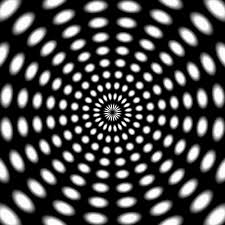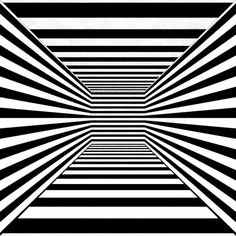|
LITR 4368 Literature of the Future |
Sample answers
for Essay 1:
|
 |
Breanna Runnels
Comparative Scenarios of the
Future
Just like any other genre of literature,
there are subgenres within them. With the futuristic genre, these can be labeled
as visions or scenarios of the future. These subgenres are closely related and
can often intertwine themselves in the span of one short story. Though they are
generally very similar, there are a few indicators that show the specialization
between each scenario. These visions are the driving factors to the creation of
any piece of futuristic literature, whether it be through one of the visions, a
few, or even all of them.
The most recognizable science fiction or
futuristic scenario is alien contact. Whether it be in movies, or comics, or in
literature, as soon as you see an alien you are definitely going to encounter
the science fiction genre. The most common theme in alien contact pieces is the
idea of exploring or being explored. There are usually two storylines that come
in the alien contact vision: aliens invade or attack earth to explore or
colonize, or humans explore alien lives and habitats in outer space. Since these
two types of stories are the main background for alien contact, it is easy to
see how these types of stories could possibly be low or high tech. In the low
tech, realistic story “The Poplar Street Study”, the main theme of this is a
type of evolution. The older people who are more set in their ways and less
willing to adapt to the society that is being changed by the aliens have a hard
time thriving while the younger more malleable characters adapt and thrive
accordingly, as we see with the character Sunny. The other scenario shows how
humans struggle to understand time or space in a frame that is beyond their own
generation or planet in which they live. Even as a reader of “They’re Made of
Meat”, it took a while for me to recognize that the aliens that were being
observed were actually humans. It is a common trait of humans to not understand
that they could possibly be an alien in any situation.
The other vision of the future that many
people associate with alien contact is high tech or virtual reality. These are
the most popular or familiar types of science fiction, as they are often the
most visually appealing in movies or video games. This style includes
cybernetics, artificial intelligence, high technological advancements, and
mostly the presence of the “cyberpunk” style. High tech can sometimes seem very
realistic with the way that people live, but they have little spurts of advanced
technology like the feeding pumps or genetically created robots in “Drapes and
Folds”. Virtual reality is also one of the main traits of high-tech futures, as
specifically seen in “The Onion and I” where the real world ceases to exist for
a time and is replaced by virtual reality worlds streamed through helmets. As
for the current times, we can see ourselves moving toward a high-tech world
while still trying to preserve some low-tech conventions and necessities.
The next future vision is low-tech,
which is the exact opposite of high tech though these conventions are usually
seen working simultaneously in the same stories. Low tech is more like common
reality than virtual reality and is often more relatable. This future vision is
usually post-apocalyptic or have a setting that looks back on a previous
historical or personal moment in which the world as the characters knew it was
lost. This is a common feature in many of the pieces we read this semester like
“Speech Sounds”, where the highest grade of technology present were cars and
guns and they had lost the common way of vocally communicating therefore
reverting back to a time of the unadvanced past. There are a few stories we have
read that have perfected the balance between low tech and high tech, or at least
shown the balance within. In “The Time Traveler” he travels to a low-tech world
with a high-tech device. In “Stone Lives” he lives in a degraded world of
poverty while blind but moves up to work for a high-tech company who restores
his sight, showing that these two worlds coexisted within a distance of each
other on the same timeline.
The next three examples of scenarios of
the future rely on each other to survive, so it is easier to explain them
together. Utopia is a perfectly planned world, where it seems all of society’s
troubles are taken away and solved by a reformed society. Most of the “fixing”
factors are implemented by the government and these works typically propose
collective, socialist, or communitarian solutions to these problems while also
exploring different familial values and structures. Often times, a utopia
quickly turns to a dystopia after people begin questioning the overruling
government, lack of individuality, or overall oppression of rights. In “The
Onion and I”, the family moved into a utopian society but very quickly realized
they were missing out on the true value of life making the world they were
living in a dystopia. When the son realized that he would never expand his
knowledge further tan what the world knew at the time he entered virtual
reality, he knew that things had gone wrong. A dystopia is “a utopia gone
dysfunctional” or the world right before or left behind from an apocalypse.
Modern pieces like “Hunger Games” and the “Unwind” series are good examples of
dystopia.
The next vision brings together utopia
and dystopia in a different and new way. Ecotopia, or ecological utopia, is a
community whose social heath imitates nature’s connectivity. This style has many
ow-tech values like family and local community building, combined with high-tech
gadgets that help improve harmony with nature. While utopia (often turning into
dystopia) takes away individuality causing a struggle to gain in back, ecotopias
often value the group over the individual. In “House of Bones” people do not
even have their own names; they are instead just called whatever the person
talking to them wants to call them. Though they have no source of individuality,
their identity comes from being part of a group that is one with nature.
Each story we have read this semester
falls under one or many of these scenarios or visions of the future, but these
themes are not only present in literature. These themes carry over onto movies,
TV shows, comics, and as I have learned this semester, even in video games. Each
of these small parts play a huge role in creating the world that we know as
science fiction today.


